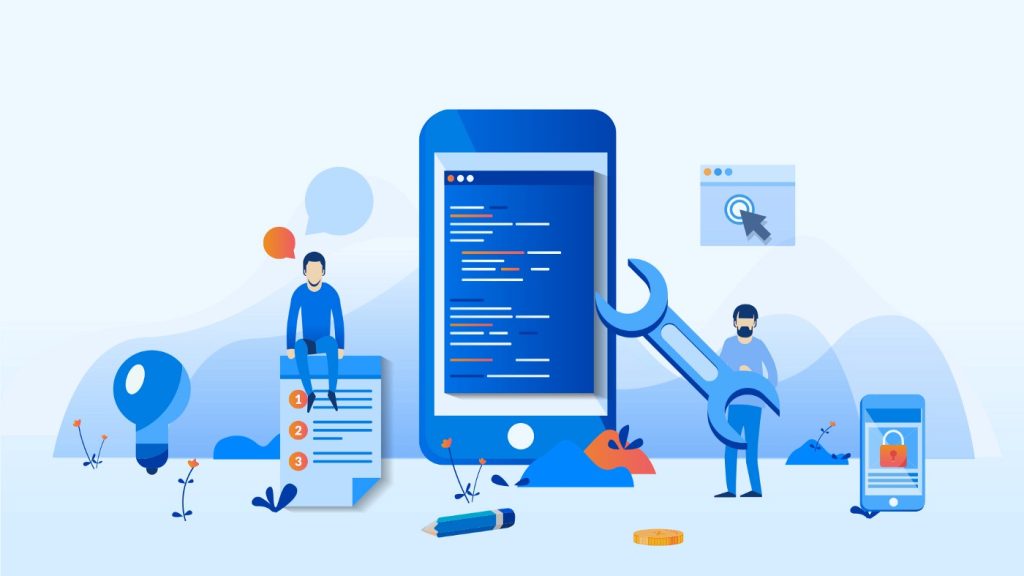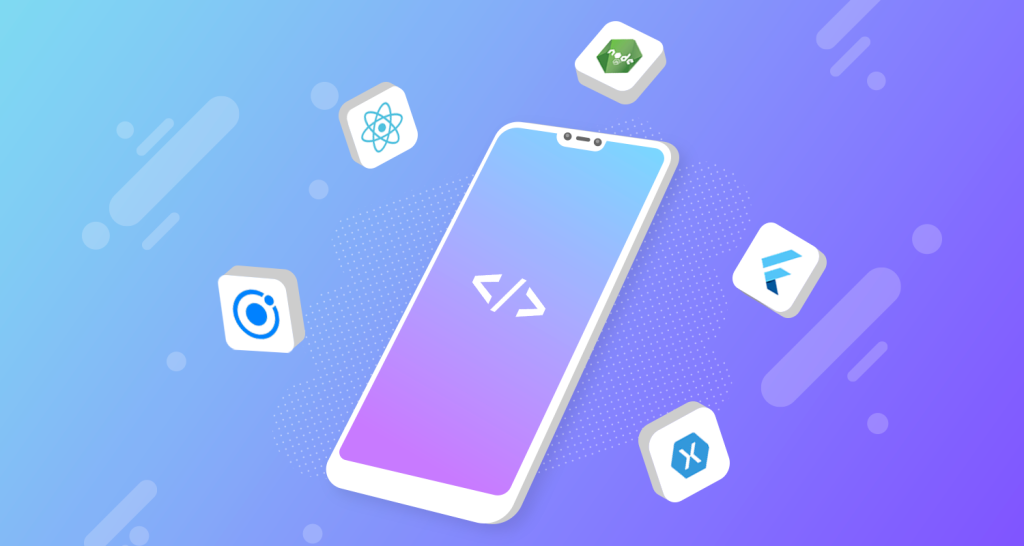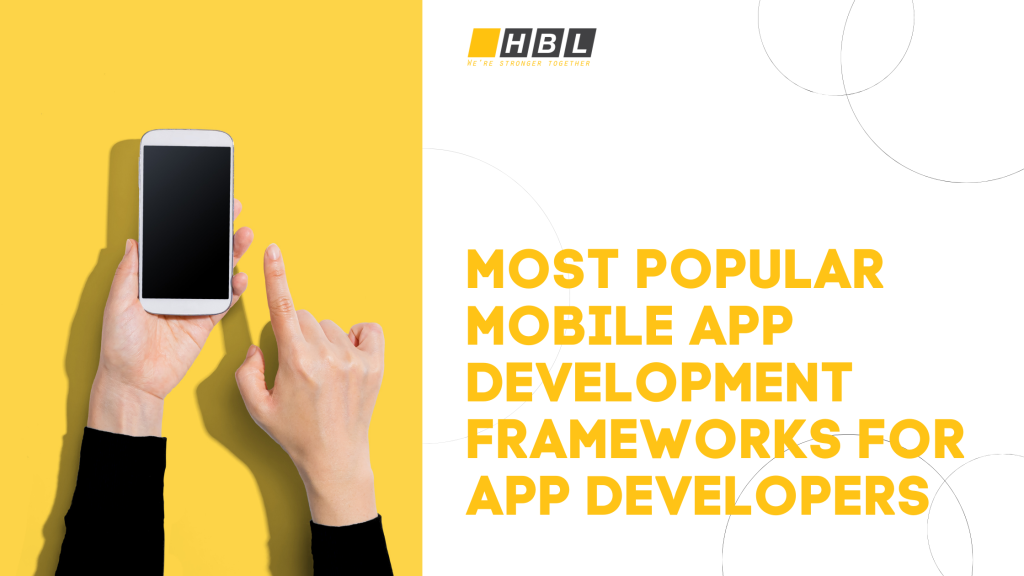Mobile apps have now become an irreplaceable part of our daily life. We have everything at our fingertips, thanks to technologically advanced mobile apps. But have you ever wondered how to create a mobile app? If you have indeed, we have the answer for you: using mobile application development frameworks. In the technological world, there are numerous frameworks to choose from. Today’s post will explain what a framework is, the many sorts of frameworks, and the top names of mobile app development frameworks.
What is a Mobile Application Framework?
A framework is a platform that serves as a foundation for developing software applications. To put it simply, a framework works like a template that can be changed to your liking by adding code. By using frameworks, programmers don’t need to build specific tools for each project they implement.
After knowing what a framework is, we can easily understand the term “mobile application framework” – a software creation platform that includes tools to support mobile app development. In addition, it provides a fundamental structure to support the development of applications for a specific environment.
Frameworks are diverse, durable, and efficient because they are frequently produced, tested, and optimized by a team of skilled software engineers and programmers. Developing apps with a framework allows you to concentrate on the application’s high-level functionality because the framework handles all of the low-level functionality.
Why do we use Mobile Application Frameworks?
Mobile application development is a difficult task. Not only does it require a variety of activities, such as coding, designing, and testing, but programmers also have to deal with syntax, declarations, garbage collection, statements, exceptions, and more just for the coding aspect.
Software framework makes developers’ lives easier since it allows them to control the entire software development process, or at least the majority of it, from a single platform.

Types of Mobile Application Frameworks
To make the most of an application, you should consider what framework best suits your needs. You have heard of Android, iOS, or Windows, but those are just a few digital devices available. In order to serve a wide range of application development needs, there are many different types of frameworks to make it easier for developing mobile applications. In terms of how applications work on a smartphone, we can categorize mobile apps into three types:
1. Native Applications
A native application is developed for use on a particular platform, device or operating system such as Apple’s iOS or Google’s Android.
Native apps work with the device’s operating system in ways that allow them to perform faster and more flexibly than other app kinds. Developers create separate app versions for each device type if the app is marketed to users of various device types.
2. Web Applications
Unlike computer-based software programs that are run locally on the device’s operating system, a web application runs on a web server.
The user can access web apps through a web browser with an active network connection. Emails, online shopping sales, auction sites, weblogs, and instant messaging apps are popular examples of web apps.
3. Hybrid Applications
A hybrid application is a blend of both native and web solutions. In essence, hybrid apps are any web applications built using HTML5, CSS, and JavaScript. Then, they are wrapped in a native app with the help of some special container platforms.
Compared to their web-based competitors, hybrid apps have a greater capacity to access the device system. A hybrid app, for example, can use your phone’s camera, contact list, and other functionalities. Due to the freedom of choice in using the codebase, it is also a cost-effective approach.

Top Mobile Application Frameworks in 2022
Given the wide range of programming languages accessible, naturally, there are many frameworks to choose from. Each of these frameworks is utilized to handle specific difficulties during the mobile app development process. We’ll go into some of the most popular frameworks for app developers.
1. React Native
React Native is a cross-platform application development framework created and supported by Facebook. It makes things easier to develop mobile apps for Android and iOS.
The main benefit is that it allows for faster development and deployment. Reusable parts, interactivity with third-party extensions, and component-based GUI design for front-end apps are some of this framework’s other notable features.
2. Flutter
Flutter is a Google open-source and accessible framework that lets you develop native Android and iOS apps with a simple codebase. It’s a game-changing software development kit for cross-platform app development because it employs an innovative approach to producing native-like apps.
Flutter is a complete and precise framework that includes widgets, a rendering engine, debugging and integration application programming interfaces (APIs), and resources to help developers create and launch stunning mobile apps. Several well-known companies, including Google and Abbey Road Studios, have used Flutter.
3. Xamarin
Xamarin is a cross-platform application development framework that developers use to create apps for Android and iOS. The applications require fewer lines of code because they use the C# programming language. As a result, the coding process is more efficient. It also enables us to quickly transfer scripts between different operating systems, such as Windows and macOS.
Microsoft has bought Xamarin. People might assume that because app development is so much faster, they lose quality and construction, but this is not the case. Xamarin-based apps, on the other hand, provide flawless native functionality in terms of quality and efficiency. As a result, its integration with Microsoft Visual Studio is beneficial in managing and producing apps.
4. Ionic
Ionic is a framework for developing Progressive Web Apps (PWAs), hybrid mobile apps, and cross-platform mobile apps. It is a user-friendly framework that combines Apache Cordova (PhoneGap) with Angular to allow programmers to develop Android and iOS apps that work together effortlessly.
Developers can use the framework to create excellent, feature-rich native apps. Ionic’s most notable feature is that it allows programmers to use a variety of UI components in the application framework, such as filtering, inputs, views, fast navigation, and actions sheets.
5. Apache Cordova
Apache Cordova (formerly known as PhoneGap) is developers’ popular application development framework. It’s a cross-platform app development framework that uses CSS3, HTML5, and JavaScript to create mobile apps.
The Cordova plugins enable programmers to use smartphone hardware features like GPS, cameras, and accelerometers to create a native-like interface. The main features of Apache Cordova include a faster development process with a single code base and a third-party application administration tool.
6. jQuery Mobile
jQuery Mobile is a precise cross-platform mobile application development framework that enables the creation of platform-independent apps. This framework uses JavaScript and HTML to create flexible online portals that run on various platforms, including smartphones, tablet devices, and PCs.
To create highly changeable themes for web and mobile apps, jQuery uses an HTML5-based framework with the Theme Roller. There are two versions of jQuery Mobile: a customized framework and a stable version.
Wrapping Up
Mobile application development frameworks are incredibly beneficial to developers when it comes to creating products. They provide the infrastructure that has already sorted out the low-level intricacies, allowing the developer to concentrate on the project’s particular details. In addition, the developer will have to write less code, less code equals fewer defects and less development time, which saves money.

